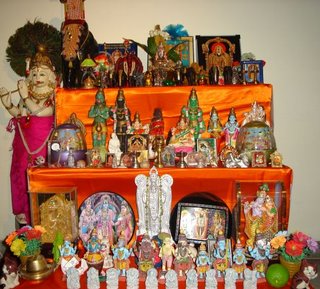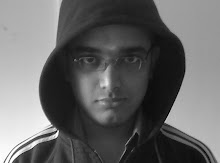War of Browsers
Starring: Microsoft Internet Explorer 7.0, Mozilla Firefox 2.0
The Story
Long long ago, there was a browser called Netscape Navigator. This browser ruled the world of computers. Suddenly the company that made Windows, the largest used operating system in the world, Microsoft Inc got up from sleep and made a browser of its own... called the Internet Explorer. The best thing about this browser was that it came pre-installed with the operating system. And for lazy people who did not know the "i" of installation, this was a dream come true.
The Rise of IE's Empire
Years passed by and the users of Internet Explorer were just increasing. The empire of IE was at the peak in 1999 with more than 96% of the users across the world used this magical browser. People enjoyed every bit of it. With the introduction of IE 5.0, the web-programming community was delighted. The reason - IE5 had support for so many new visual enhancements that can be brought in to the website, that it was just unbelievable. But as they say... every empire, irrespective of how powerful it is, has to eventually fall one day. And then from nowhere came in a dark horse that
was all set to capture the empire that IE had maintained for almost half of a decade.
The Fall of the Empire
The name of the dark horse was Firefox. The browser that was "simple, fast and secure". Although in the initial stages, the browser did not seem to be a real competition for the giant IE, but later it took on speed and today it has taken away almost 15-20% of IE's market.
The primary reason for the fall of IE's user base is its lack of innovation. What Microsoft forgot was that the only thing that is constant in the world is "change". Unless you offer new things to your users, they will move on to some other product. That's exactly what happened to IE. To add to their woes there were many great hackers/crackers who continuously found loopholes and flaws in the security system in IE.
The only thing that has kept IE still in the race is the laziness or ignorance of users. A large user base still does not know that there is a browser in the market that is better than IE. Or the other way round; they may know that there is something called as Firefox that has created a buzz... but maybe its not worth an installation!
The Current Scenario:
In October 2006, Microsoft released version 7 of IE after five long years. What was there in this new browser is just what was there in Firefox and Safari since the past two years... So essentially, there is nothing really innovative that Microsoft has done with this new release other than making an attempt to catch up with the competing browsers.
On the other hand, Firefox released version 2.0 of its browser. Firefox continuously tries to make new advancements to its browser by adding features that would make surfing safe and secure. Although IE also is not behind in this race, it is still always a couple of steps behind Firefox in implementation of these new features.
The Climax:
No one knows what is going to happen in the future. Will Firefox be able to grab the bigger part of market share? Will IE be able to grab back its empire that Firefox has taken away? How long, how quick, no one knows. But one thing is sure... with this war the benefit will be for us -- the consumers!
Saturday, October 28, 2006
Monday, October 02, 2006
Navaratri Golu
South-Indians, the ones from Tamil Nadu and Kerala Tamilians celebrate Navaratri by what is known as "Navaratri Golu". During the nine days of Navaratri, a set of dolls (known as "bommai") is displayed on steps (known as "padi"). The number of steps are supposed to be in odd numbers - 3, 5, 7, 9 or 11.
One of the most important part of the display is the Kalasam. It is a brass pot with a coconut on mango leaves. This coconut is not changed throughout the nine days of the festival. The Kalasam is to be kept on the first step. A "kutti-valakku" (traditional lamp) is also lit near the Golu. Kolam (rangoli) is put in front of Kolu.
The dolls consist of various Gods and Godesses. The dolls may vary from house to house. But one doll that is considered mandatory is "Marapaachi". It is a pair of wooden dolls of a boy and girl. They indicate fertility.
Throughout the nine days of Navaratri, various kinds of prasads are made and offered to God. Ladies from the neighbourhood, relatives, and friends are invited to see the Golu. They are given kumkum, manjal (turmeric), comb, mirror, fruits, and some gift as per one's capacity.
kinds of prasads are made and offered to God. Ladies from the neighbourhood, relatives, and friends are invited to see the Golu. They are given kumkum, manjal (turmeric), comb, mirror, fruits, and some gift as per one's capacity.
Every night, aarti is taken of the dolls. The aarti is prepared by mixing kumkum and chunna (lime) with water. This solution is then thrown somewhere outside the house. It is considered as removal of "drishthi" (evil eye).
The nineth day is the day of Saraswati Pooja. On this day, all the books that are regularly used are kept in front of Devi Saraswati - The Goddess of Wisdom and Knowledge - and prayers are offered. On this day, kids are not supposed to study or read - one of those rare days when parents don't allow to children to study. Tools are also placed as a part of "Ayudha Pooja". Vehicles are also decorated and pooja is performed.
On the tenth day, the day of Dusshera also known as Vijayadashami, is considered as the most auspicious days of all. Its the day marking the end of evil, destruction of the bad, and the start of a new year. New ventures are started on this day. The books that were kept for Saraswati Pooja are taken and read out. Small kids are made to start writing on this day. This is usually done in temples like Mookambika Temple at Kollur and Guruvayur Temple at Guruvayur.
On the eve of Vijayadashami, one of the dolls are symbollically made to sleep by making the doll lie down. The kalasam is also moved a bit towards north to mark the end of Navaratri for that year. Prayers are offered to thank God for helping successfully complete this year's Navaratri and also pray to provide opportunity to keep Navaratri Golu for the next year.
One of the most important part of the display is the Kalasam. It is a brass pot with a coconut on mango leaves. This coconut is not changed throughout the nine days of the festival. The Kalasam is to be kept on the first step. A "kutti-valakku" (traditional lamp) is also lit near the Golu. Kolam (rangoli) is put in front of Kolu.
The dolls consist of various Gods and Godesses. The dolls may vary from house to house. But one doll that is considered mandatory is "Marapaachi". It is a pair of wooden dolls of a boy and girl. They indicate fertility.
Throughout the nine days of Navaratri, various
 kinds of prasads are made and offered to God. Ladies from the neighbourhood, relatives, and friends are invited to see the Golu. They are given kumkum, manjal (turmeric), comb, mirror, fruits, and some gift as per one's capacity.
kinds of prasads are made and offered to God. Ladies from the neighbourhood, relatives, and friends are invited to see the Golu. They are given kumkum, manjal (turmeric), comb, mirror, fruits, and some gift as per one's capacity.Every night, aarti is taken of the dolls. The aarti is prepared by mixing kumkum and chunna (lime) with water. This solution is then thrown somewhere outside the house. It is considered as removal of "drishthi" (evil eye).
The nineth day is the day of Saraswati Pooja. On this day, all the books that are regularly used are kept in front of Devi Saraswati - The Goddess of Wisdom and Knowledge - and prayers are offered. On this day, kids are not supposed to study or read - one of those rare days when parents don't allow to children to study. Tools are also placed as a part of "Ayudha Pooja". Vehicles are also decorated and pooja is performed.
On the tenth day, the day of Dusshera also known as Vijayadashami, is considered as the most auspicious days of all. Its the day marking the end of evil, destruction of the bad, and the start of a new year. New ventures are started on this day. The books that were kept for Saraswati Pooja are taken and read out. Small kids are made to start writing on this day. This is usually done in temples like Mookambika Temple at Kollur and Guruvayur Temple at Guruvayur.
On the eve of Vijayadashami, one of the dolls are symbollically made to sleep by making the doll lie down. The kalasam is also moved a bit towards north to mark the end of Navaratri for that year. Prayers are offered to thank God for helping successfully complete this year's Navaratri and also pray to provide opportunity to keep Navaratri Golu for the next year.
Subscribe to:
Posts (Atom)
